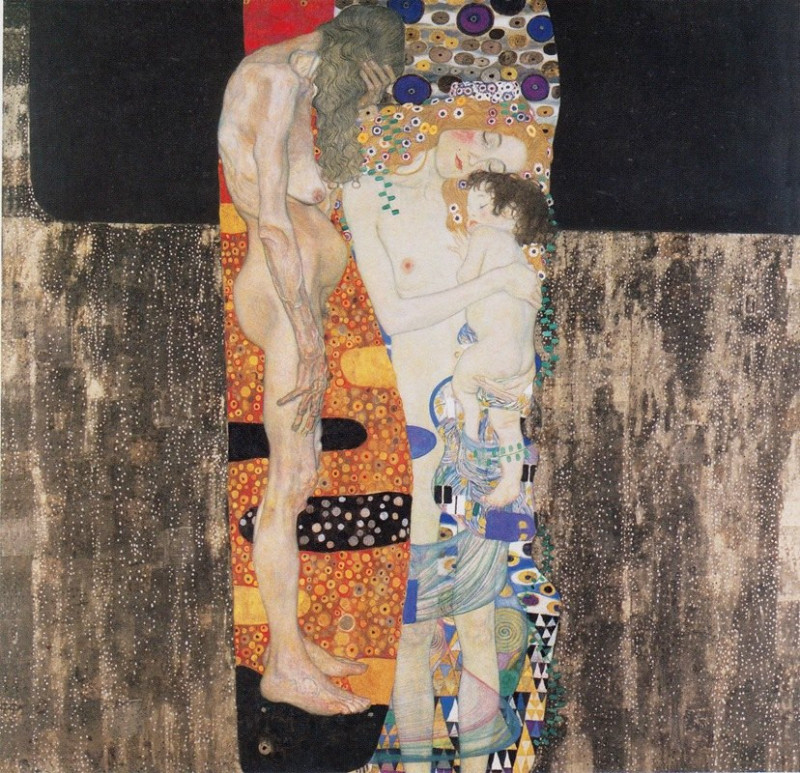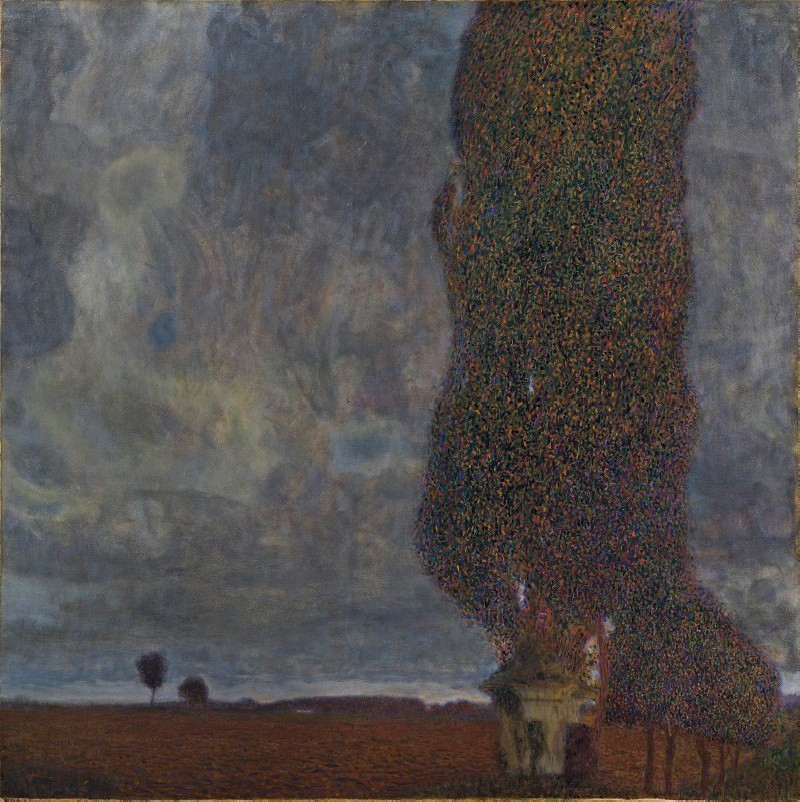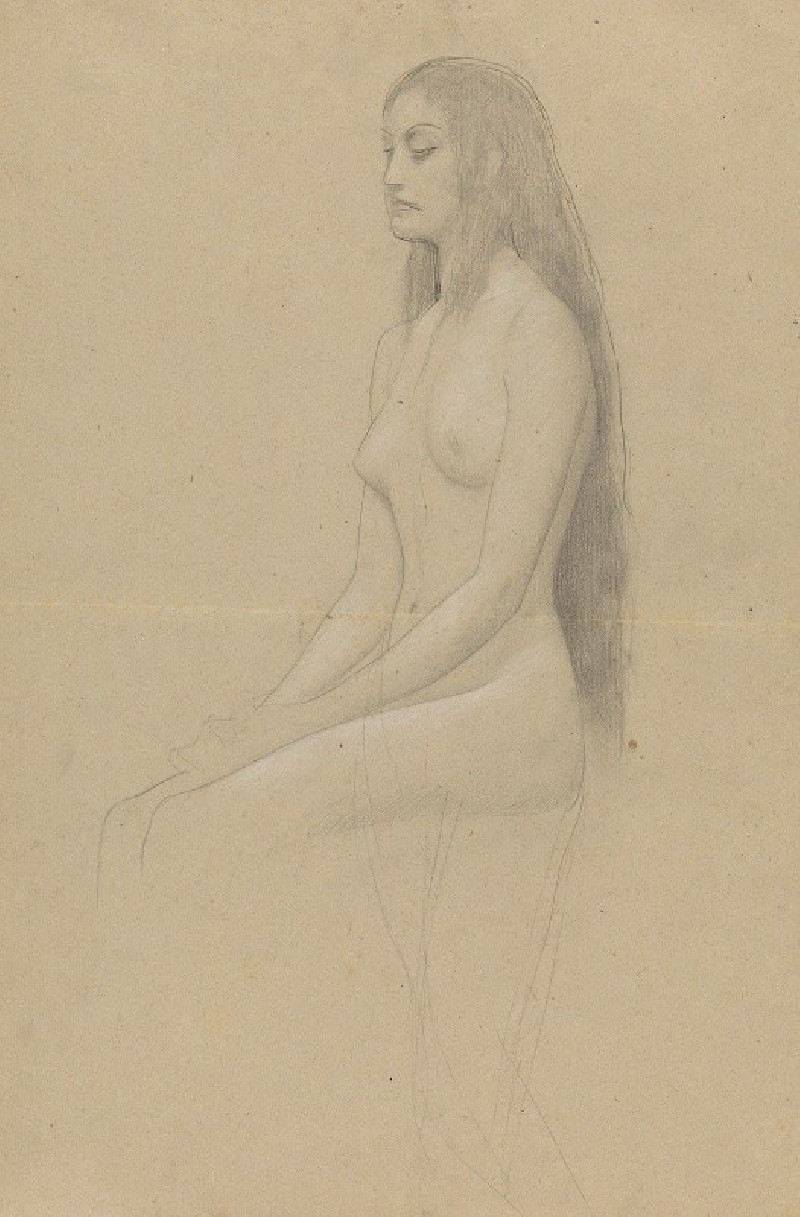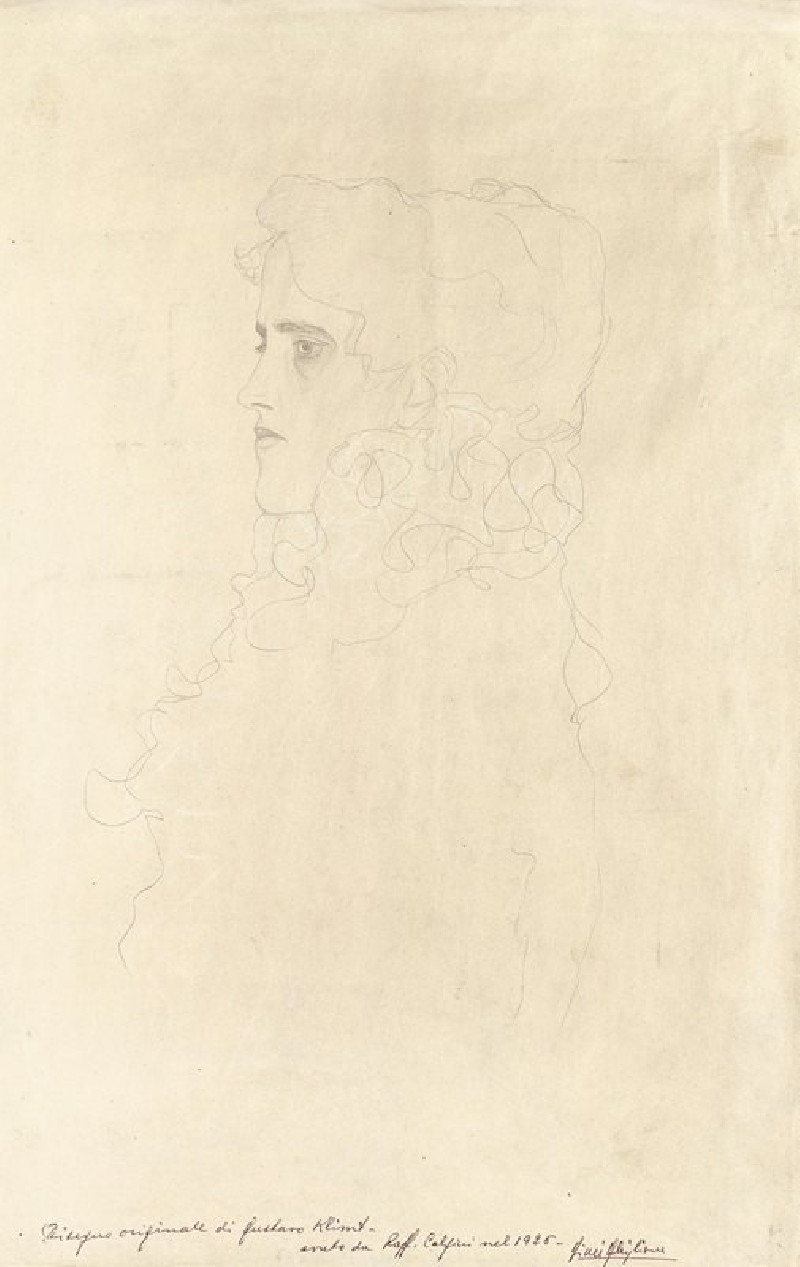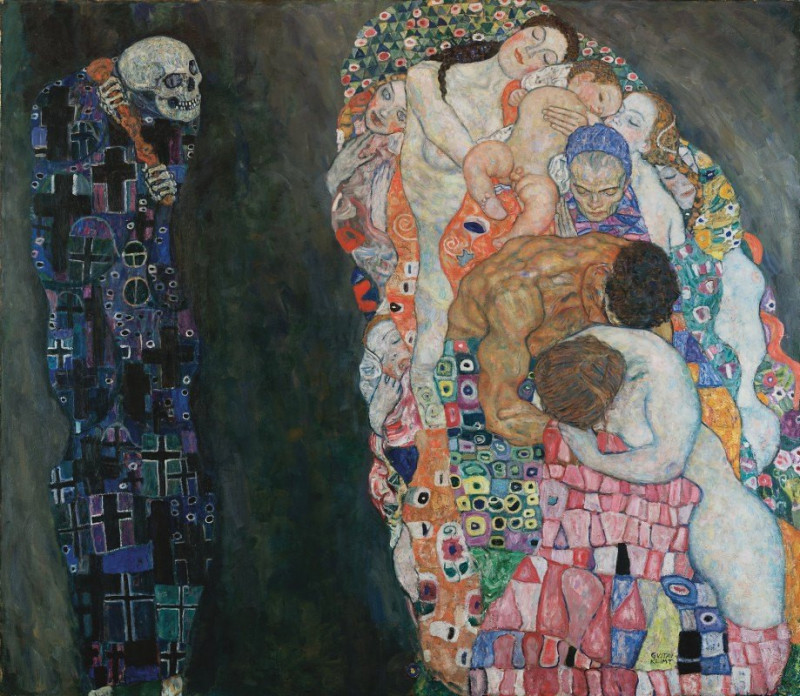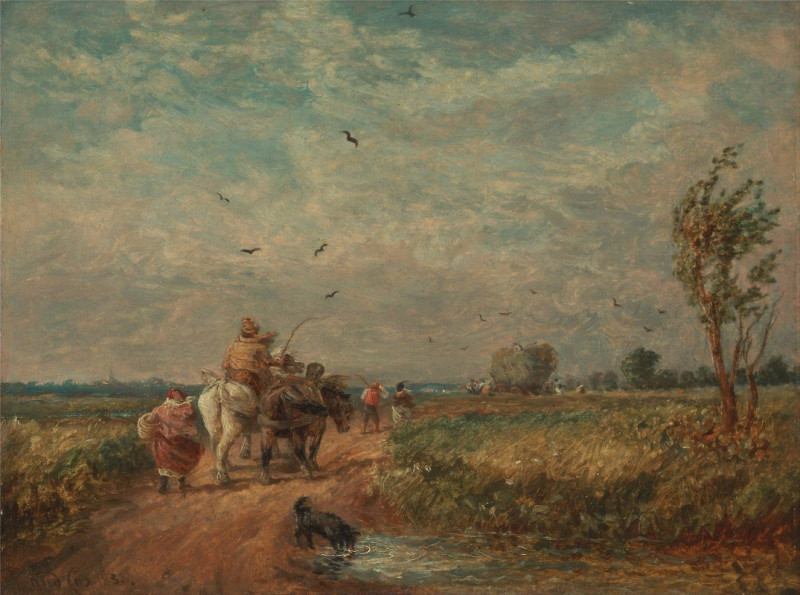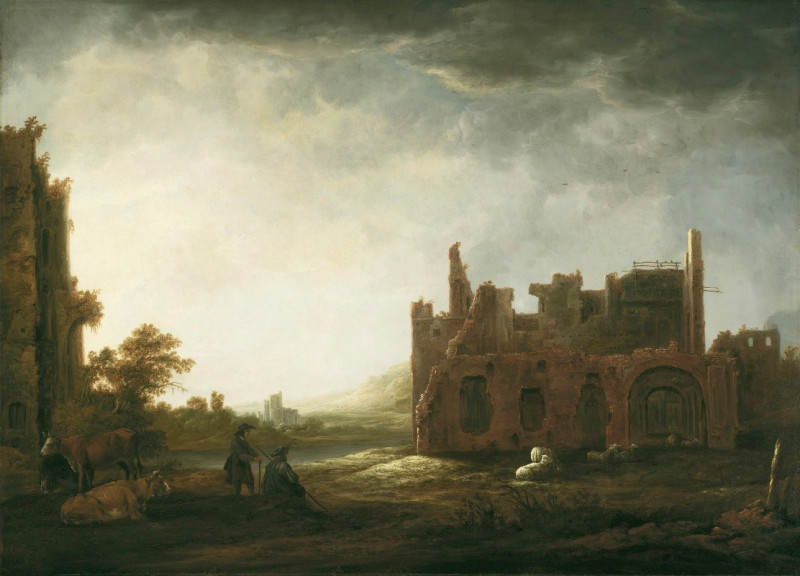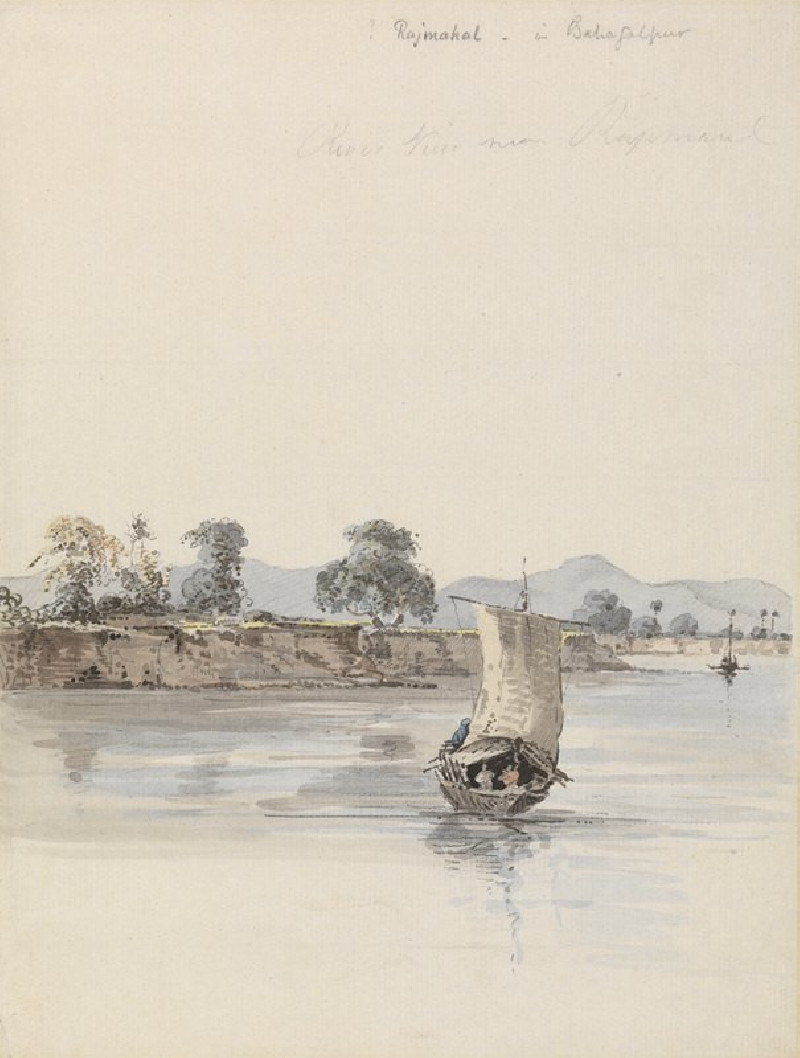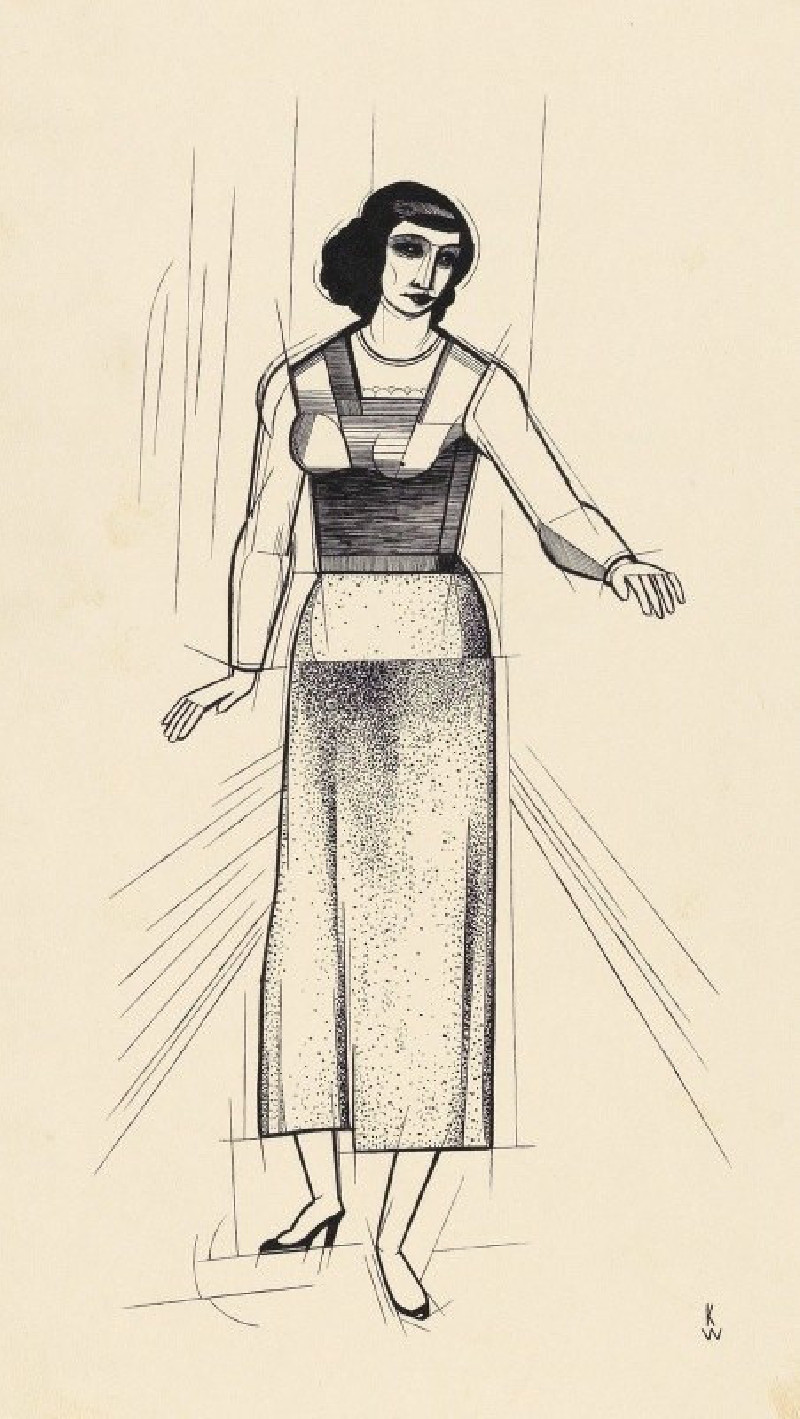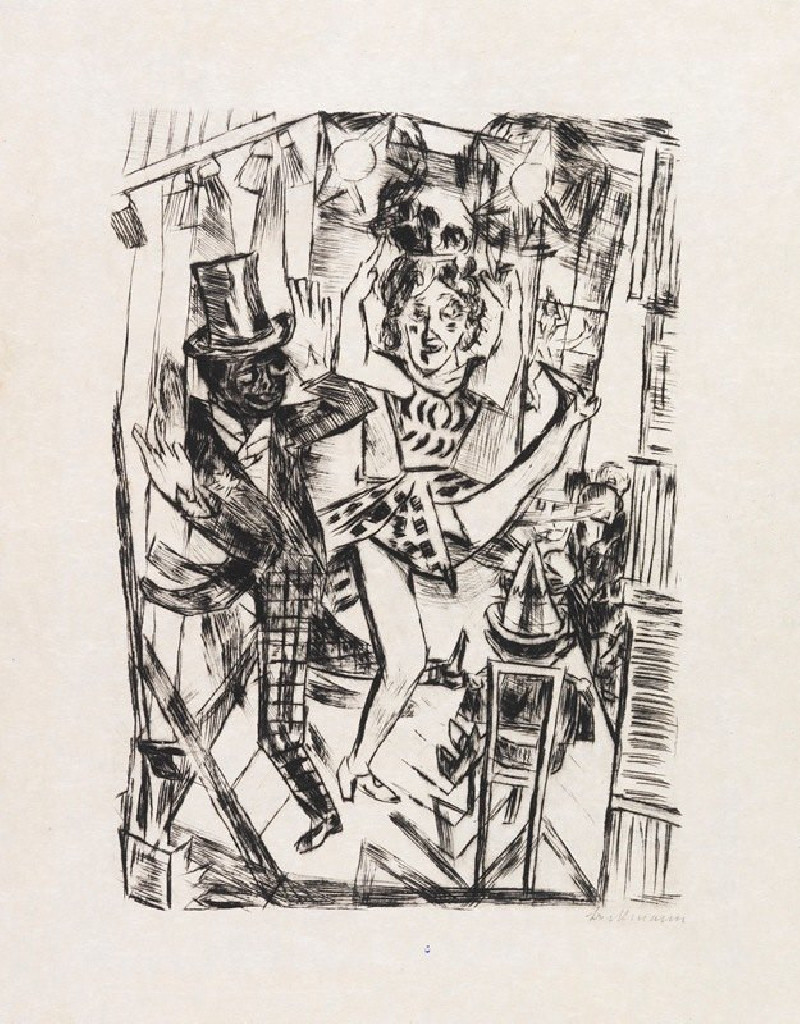The Three Ages of the Woman (1905)
Technique: Giclée quality print
Recommended by our customers
More about this artwork
Gustav Klimt's painting "The Three Ages of Woman," created in 1905, is a profound portrayal of the cycle of life, encapsulating the tender and poignant journey from birth through maturity to old age. This artwork strikingly illustrates Klimt's distinctive style, characterized by ornate decoration and rich symbolic imagery.The painting features three female figures that embody the different stages of a woman's life. On the right side, a young mother tenderly cradles her infant, representing youth and the beginnings of life. The mother's gaze is loving and protective, her body adorned with intricate patterns and vibrant, mosaic-like clothing that motifs which are characteristic of Klimt's golden phase.At the center, a fully mature woman stands in all her glory, symbolizing the peak of life and fertility. Her expression is serene yet contemplative, perhaps signifying the full embrace of her womanhood and the complexities it entails.To the left, the composition shifts dramatically to an older, frail woman, her body bent and her face obscured, suggesting the decline into old age and the eventual return to the earth. This contrasting depiction starkly reminds us of the transient nature of life.Klimt's masterful use of gold leaf and his inclusion of decorative motifs make the painting not only a visual delight but also a profound commentary on the beauty and inevitability of life's cycles.
Delivery
Returns
Gustav Klimt (1862–1918) was one of the greatest Austrian symbolist painters of the Art Nouveau era. Renowned as one of the most prominent founding members, and as a president of the Vienna Art Nouveau movement (Vienna Secession). His works were mainly paintings, murals, and sketches. Marked by his numerous erotic drawings, Klimt's primary subject were female figures, and at one point his work was even criticized as pornographic. Klimt found financial success in his "Golden Phase" with decorative techniques and the prominent use of gold leaf in his paintings.

